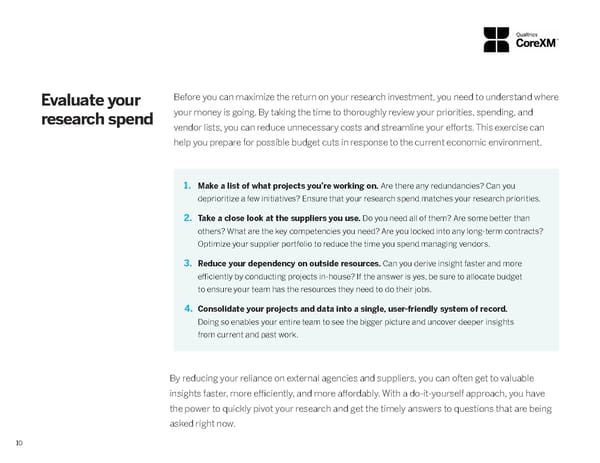10 Evaluate your research spend Before you can maximize the return on your research investment, you need to understand where your money is going. By taking the time to thoroughly review your priorities, spending, and vendor lists, you can reduce unnecessary costs and streamline your efforts. This exercise can help you prepare for possible budget cuts in response to the current economic environment. 1. Make a list of what projects you’re working on. Are there any redundancies? Can you deprioritize a few initiatives? Ensure that your research spend matches your research priorities. 2. Take a close look at the suppliers you use. Do you need all of them? Are some better than others? What are the key competencies you need? Are you locked into any long-term contracts? Optimize your supplier portfolio to reduce the time you spend managing vendors. 3. Reduce your dependency on outside resources. Can you derive insight faster and more efficiently by conducting projects in-house? If the answer is yes, be sure to allocate budget to ensure your team has the resources they need to do their jobs. 4. Consolidate your projects and data into a single, user-friendly system of record. Doing so enables your entire team to see the bigger picture and uncover deeper insights from current and past work. By reducing your reliance on external agencies and suppliers, you can often get to valuable insights faster, more efficiently, and more affordably. With a do-it-yourself approach, you have the power to quickly pivot your research and get the timely answers to questions that are being asked right now.
 Maximize Your Research ROI Page 9 Page 11
Maximize Your Research ROI Page 9 Page 11